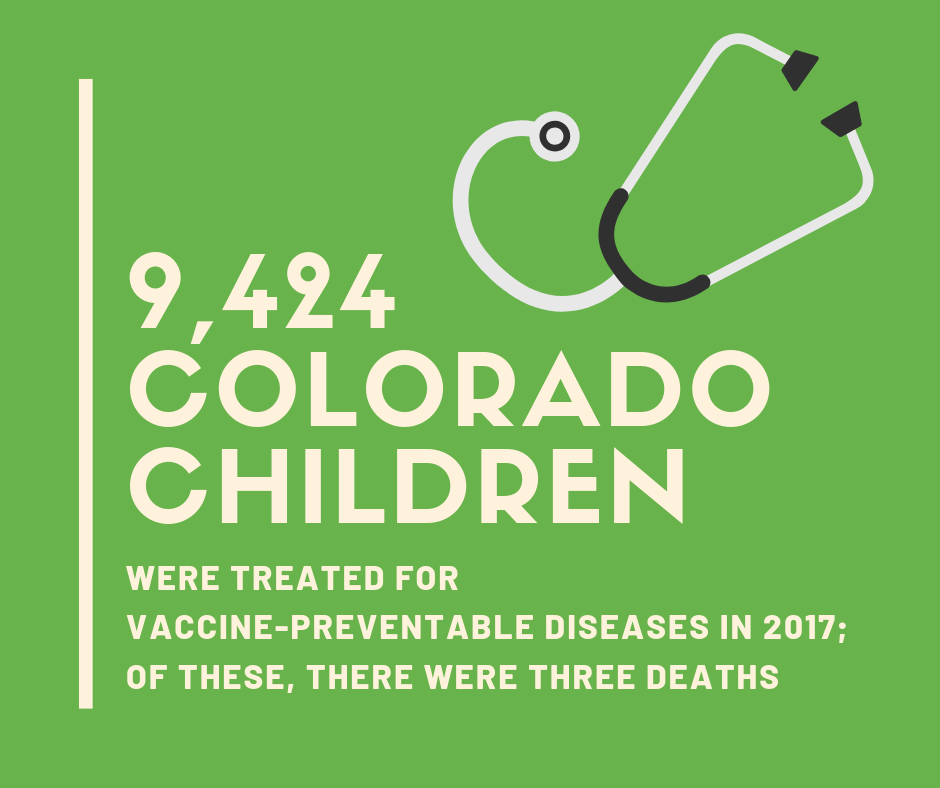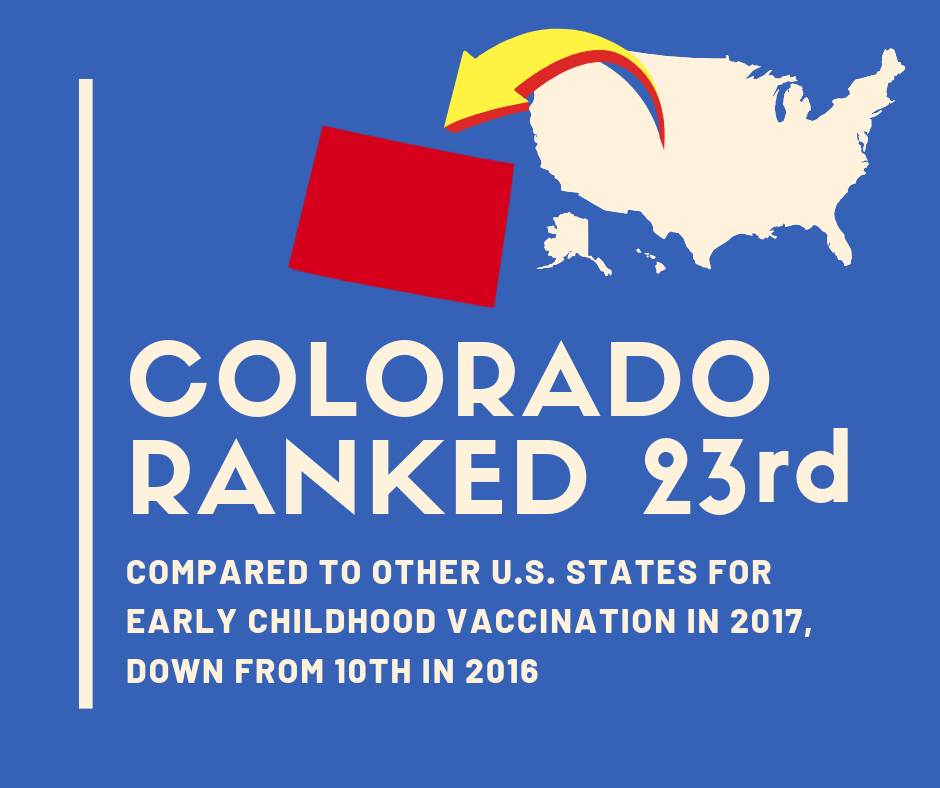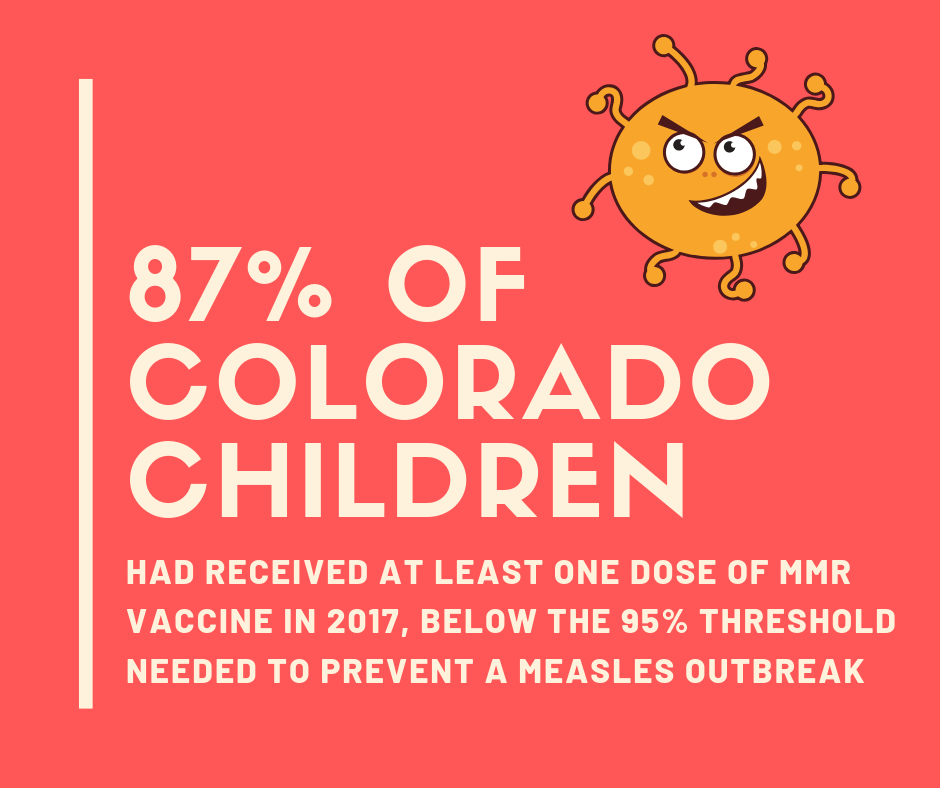While Colorado consistently appears in national news as one of the nation’s top health performers in a variety of measures, childhood immunization rates across the state tell a different story.
An independent report released Feb. 4 by Children’s Hospital Colorado and the Colorado Children’s Immunization Coalition (CCIC) shows that only 71 percent of children ages 19-35 months were up to date on all vaccines in 2017, leaving 29 percent vulnerable to one or more vaccine-preventable diseases. This rate is well below the Healthy People 2020 goal of 95 percent for each vaccine. The first of three anticipated volumes, the February installment of the 2019 Vaccine-Preventable Diseases in Colorado’s Children report examines 2017 data on vaccine-preventable diseases in Colorado, highlights the latest updates involving measles in our and other states, and underscores opportunities to decrease barriers to vaccination and improve rates.
In 2017, Colorado’s overall vaccination rate for children ages 19-35 months dropped after steady improvement from 2013 through 2016, when our state ranked 10th in the nation. Now, according to the most recent data (2017) Colorado ranks 23rd. The 2019 report highlights the cost of low vaccination rates to both the community and the economy.
The highest burden of preventable illness falls on infants and young children. Among children in Colorado who were hospitalized for vaccine-preventable diseases, 53 percent were under five years old. What’s worse, the highest rate of non-compliance (not being up to date on recommended vaccines) was among children 3-19 months of age, those most vulnerable to vaccine-preventable diseases and their complications. And more than 25 percent of all 7-month-old infants are still behind in receiving vaccines that protect against tetanus, diphtheria, pertussis (DTap), and pneumococcal disease (PCV).

Low levels of community protection due to unacceptably low vaccination rates leave many vulnerable children at risk of serious infectious diseases, such as measles. On Jan. 15, public health officials reported a case of measles in an adult in Denver, resulting in an extensive investigation. As of January 2019, the US is experiencing measles outbreaks in Oregon, Washington and New York, with the outbreak in New York having grown to more than 200 cases.
Even when a vaccine-preventable disease exposure does not result in transmission, the investigation and prevention can be costly. Tri-County Health Department officials estimated the costs of responding to two separate measles cases in 2016 and 2017 to be $18,000 and $49,000, respectively.
While there are Colorado parents who refuse or delay vaccinating their children, leaving pockets of under- and unvaccinated communities, other Colorado parents face barriers to accessing services, including gaps in insurance coverage, geography, availability of childcare and ability to take time off work, and other issues. Fewer than 600 Colorado healthcare sites participate in the Vaccines for Children (VFC) program, and eight rural counties have no or only one VFC site.
Additionally, the 2019 report showcases new data that reveals the prevalence of free-or-reduced lunch and Medicaid enrollment are indicators of high immunization rates at the local level. In counties with low Medicaid enrollment and low vaccination rates, increasing enrollment may help to increase rates. The 2019 report calls for Colorado lawmakers to dedicate enhanced funding, capacity, and resources to support health infrastructure and make vaccines more accessible across our state.
Our children and grandchildren deserve to learn, grow and play in healthy, protected environments, without risk of contracting diseases that could be prevented through higher vaccination rates. Here’s what you can to assure our communities are healthy and protected:
- Join Colorado Parents for Vaccinated Communities (CPVC) to become an advocate in your community and learn how you can build a safer environment for our children at the grassroots level. Visit coparents4vax.org for more information.
- Join the Colorado Children’s Immunization Coalition (CCIC) as a member and commit to their mission to keep Colorado kids healthy through immunization.
- Contact your legislator to express your support for stronger vaccination policies and support for the Colorado Immunization Information System (CIIS), which is an integral part of all pediatric and family practices.
- Make sure you and your family are up to date on recommended vaccinations to protect yourself, your loved ones and your community.
Read the full report at childrensimmunization.org.



